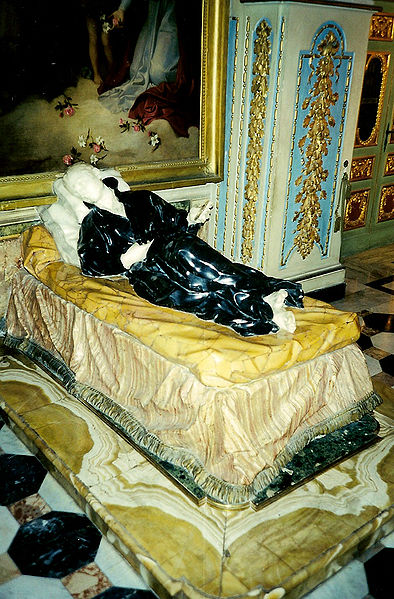From his series on the apostles, Pope Benedict on Bartholomew, traditionally associated with Nathanael, last October:
His heart is moved by Jesus’ words, he feels understood and he understands: “This man knows everything about me, he knows and is familiar with the road of life; I can truly trust this man”. And so he answers with a clear and beautiful confession of faith: “Rabbi, you are the Son of God! You are the King of Israel!” (Jn 1: 49). In this confession is conveyed a first important step in the journey of attachment to Jesus.
Nathanael’s words shed light on a twofold, complementary aspect of Jesus’ identity: he is recognized both in his special relationship with God the Father, of whom he is the Only-begotten Son, and in his relationship with the People of Israel, of whom he is the declared King, precisely the description of the awaited Messiah. We must never lose sight of either of these two elements because if we only proclaim Jesus’ heavenly dimension, we risk making him an ethereal and evanescent being; and if, on the contrary, we recognize only his concrete place in history, we end by neglecting the divine dimension that properly qualifies him.
We have no precise information about Bartholomew-Nathanael’s subsequent apostolic activity. According to information handed down by Eusebius, the fourth-century historian, a certain Pantaenus is supposed to have discovered traces of Bartholomew’s presence even in India (cf. Hist. eccl. V, 10, 3).
In later tradition, as from the Middle Ages, the account of his death by flaying became very popular. Only think of the famous scene of the Last Judgment in the Sistine Chapel in which Michelangelo painted St Bartholomew, who is holding his own skin in his left hand, on which the artist left his self-portrait.
St Bartholomew’s relics are venerated here in Rome in the Church dedicated to him on the Tiber Island, where they are said to have been brought by the German Emperor Otto III in the year 983.
To conclude, we can say that despite the scarcity of information about him, St Bartholomew stands before us to tell us that attachment to Jesus can also be lived and witnessed to without performing sensational deeds. Jesus himself, to whom each one of us is called to dedicate his or her own life and death, is and remains extraordinary.
This and more in The Apostles. A fellow from Michigan wrote me yesterday to say he’s going to an attempt an adult ed discussion group on the book, using my study guide. Hooray! One out of..what…2000 parishes? Excellent!
The image on the sidebar on the left is, of course, from Michelangelo’s Last Judgment in the Sistine  Chapel. It’s the image of Bartholomew everyone knows, but also worth knowing about is the statue of him that stands in St. John Lateran – the nave of the church is lined with enormous statues of the apostles, each holding the instrument (or in this case, the result) of his death. (click on image to get a larger view, which is still not great. Sorry.) The statue is by Pierre Le Gros the Younger, who is also responsible for (among many other works) the fantastic right altarpiece at the Gesu in Rome of Religion Overthrowing Heresy. He also did a quite fascinating piece, of The Death of St Stanislas Kostka for the Jesuit novitiate at Sant’Andrea al Quirinale.
Chapel. It’s the image of Bartholomew everyone knows, but also worth knowing about is the statue of him that stands in St. John Lateran – the nave of the church is lined with enormous statues of the apostles, each holding the instrument (or in this case, the result) of his death. (click on image to get a larger view, which is still not great. Sorry.) The statue is by Pierre Le Gros the Younger, who is also responsible for (among many other works) the fantastic right altarpiece at the Gesu in Rome of Religion Overthrowing Heresy. He also did a quite fascinating piece, of The Death of St Stanislas Kostka for the Jesuit novitiate at Sant’Andrea al Quirinale.

